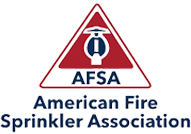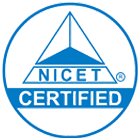How Often Do You Need a Suppression System Inspection?
In the United States, the National Fire Protection Association (NFPA) outlines most of the compliance guidelines
for fire suppression system inspections and testing.
The latest guidelines for inspections include:
- Weekly inspections: Someone on staff who is qualified should look at the control valves and gauges
for a wet or dry sprinkler system.
- Monthly inspections: If you have a wet pipe system, its alarm valves should also be inspected every
month.
- Quarterly inspections: Each quarter, ensure someone qualified inspects the alarm valve exterior,
supervisory devices, and waterflow alarms. You should also confirm your connection with the fire department.
- Annual inspections: Annual inspections are the most extensive and must be completed by a licensed
professional. They involve assessing pump pressure and performance, internal valves, sprinklers, hydraulic settings,
drains, batteries, oil levels, and device filters.
- Five-year inspections: Finally, every five years, the annual inspection should also include
sprinkler and gauge tests, alarm valve checks, and evaluation of the interior backflow preventer.
While a certified inspector is required to complete an annual inspection, some of the less extensive evaluations can
be completed in-house, but they should still be recorded along with any services rendered on the system, including
part replacements and preventive maintenance. Furthermore, be sure to understand the manufacturer’s inspection
guidelines for every part of your system, as some may require more frequent testing than others.
How Does a Fire Suppression Inspection Work?
When you schedule with certified inspectors such as those at National Fire + Safety, we implement a comprehensive
inspection checklist that includes:
- Planning: We look at the blueprints and setup of your facility and identify areas with the highest
risk so we can tailor our inspection process to your specific situation.
- Visual inspection: Upon arrival at your facility, we begin with a visual overview of your
suppression system. We will look for well-maintained safety features, clear signage, and signs of damage to explore
more closely later on.
- Compliance inspection: We always consider NFPA guidelines and any other federal, local, or internal
standards you must meet. Our inspection will adhere to these regulations to help you avoid serious fines or safety
infractions.
- Fire suppression system testing: Following the visual inspection, we will get up close with your
equipment and test it to make sure everything operates as intended. We will make note of any required updates and
violations to share with you prior to the completion of our work.
- Maintenance and repairs: Many fire safety violations are ones you don’t even know you have.
National Fire + Safety’s technicians are prepared to make on-site repairs during or after your appointment to get
you up to code and ensure a satisfactory report.
- Report and recommendations: Finally, we will prepare a full report for you to keep on-site and
share with local safety authorities. We can also make recommendations to improve your system and help you avoid
future violations.
Preparing for Your Suppression System Inspection
Because an inspection can take time out of your operational schedule, preparing in advance is in your business’s best
interest. Taking these steps may help the inspection process move along as quickly as possible:
- Gather documentation: If you have access to them, gather any information regarding past building
reports, staff fire safety training, and service logs related to your fire suppression system.
- Evaluate your system: Though your inspector will certainly complete a thorough inspection,
completing a preliminary walk through can help you identify obvious and easily correctable violations, like
obstructed fire exits or alarms with dead batteries. Make repairs and updates where you can beforehand so your
inspector can focus on other issues.
- Make note of violations: Even if you find violations you cannot fix prior to your inspection, take
note of them and start the process now to get them fixed. This shows initiative and may help you gain some leniency
in avoiding fines or citations.
- Consider accessibility and training: Accessibility features and staff training are about more than
checking a box — in a moment of urgency, they can save lives. They will also help you stay compliant with NFPA and
other local regulations.
Choose National Fire + Safety For Fire Suppression Testing Today
National Fire + Safety is dedicated to unwavering vigilance to protect your people, property, and peace of mind. From
the installation of your suppression system to every inspection that follows, our experts are here to support your
safety every day. Schedule your inspection or learn more about our services when you contact us today.



